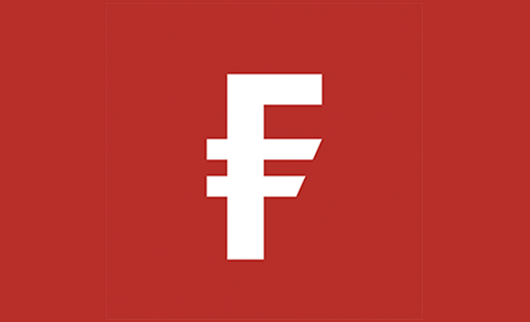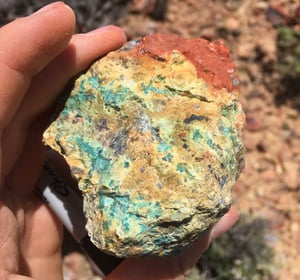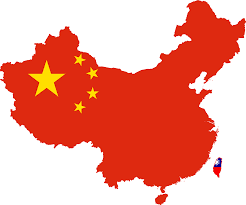Fidelity Asian Values PLC (LON:FAS) has announced its half-yearly results for the six months ended 31 January 2022.
Financial Highlights
- The net asset value of the Company increased by +2.2% for the six months ended 31 January 2022, while the share price fell by 1.1% in comparison to the Comparative Index (the MSCI All Countries Asia ex Japan Small Cap Index) which fell by 1.0% in sterling terms.
- The Company is utilising gearing on a net basis for the first time in seven years to reflect the business opportunities available to the Company. As at 31 January 2022, the Company had net gearing of -2.2%, which has risen to 3.6% as at 18 April 2022.
- The Company continues to own a portfolio of businesses which are dominant in their industries, earn good returns on capital and have attractive valuations
PORTFOLIO MANAGER’S HALF-YEARLY REVIEW
PERFORMANCE REVIEW
Over the six month period ended 31 January 2022, the net asset value (“NAV”) of Fidelity Asian Values PLC rose by 2.2% while the share price fell by 1.1%, compared with a fall of 1.0% in the Comparative Index (the MSCI All Countries Asia ex Japan Small Cap Index (net) total return (in Sterling terms)).
One of the major recent features of the investment landscape across Asia has been the material outperformance of small-cap companies relative to large-cap companies. This has been true during the six month period to 31 January 2022, but the trend really started to take root in March 2020 and looks like a partial mean reversion from what happened between 2016 and 2019 when large-cap companies significantly outperformed small-cap companies. During the last twelve months, on a sectoral basis, we have also seen significant declines in highly priced large-cap companies as well as good earnings delivery from cheaper sectors in the market such as financials, commodities, telecommunications and energy. We have also started to see a similar phenomenon in smaller-cap equities since the start of the calendar year.
However, scratch a little deeper and a large discrepancy can be seen within Asia’s smaller companies, where there has been a disproportionate outperformance of small-cap growth versus small-cap value. Small-cap growth companies are now trading at a premium of over 100% to small-cap value companies – a level we last saw in 1999-2000. Given our small-cap value-oriented focus, this market backdrop has been a big headwind for us.
A silver lining to this is that it means we are able to buy some very good businesses without too much competition. In all this, our process has remained unchanged. We continue to believe that fundamental analysis and owning good businesses where the valuation leaves sufficient margin of safety is the most time-tested way to make money in the stock market over the long term.
Company’s NAV and Comparative Index returns (as at 31 January 2022)
NAV total return (Cumulative) (%) | Comparative Index total return (%) | ||
| Tenure (since 1 April 2015) | +87.8 | +63.9 | |
| 5 Years | +42.3 | +49.2 | |
| 3 Years | +32.2 | +44.4 | |
| 1 Year | +16.3 | +14.8 | |
| 6 Months | +2.2 | -1.0 | |
| 3 Months | +0.1 | -3.0 | |
| ========= | ========= |
Source: Fidelity International.
Key Contributors over six months (as at 31 January 2022)
Order | Security | Average Active Weight (%) | Gain/Loss (%) | Contribution to Relative Returns (%) |
| Top 5 | ||||
| 1 | China Overseas Land & Investment | +1.2 | +49.1 | +0.5 |
| 2 | Power Grid Corporation of India | +1.3 | +36.9 | +0.4 |
| 3 | KEI Industries | +1.0 | +55.1 | +0.4 |
| 4 | Federal Bank | +1.3 | +19.1 | +0.3 |
| 5 | Tech Mahindra | +1.1 | +27.7 | +0.3 |
| ————— | ||||
| Total | +1.9 | |||
| ========= |
Source: Fidelity International.
Key Detractors over six months (as at 31 January 2022)
Order | Security | Average Active Weight (%) | Gain/Loss (%) | Contribution to Relative Returns (%) |
| Top 5 | ||||
| 1 | China Yongda Automobile Services Holdings | +2.4 | -29.3 | -0.8 |
| 2 | Chaowei Power | +0.6 | -39.4 | -0.4 |
| 3 | Alibaba Group Holding | +0.8 | -35.8 | -0.4 |
| 4 | Chow Sang Sang Holdings International | +2.0 | -17.0 | -0.4 |
| 5 | Taiwan Union Technology | +1.5 | -18.2 | -0.3 |
| ————— | ||||
| Total | -2.3 | |||
| ========= |
Source: Fidelity International.
You will note from the tables above that most of the detractors are from China, while most of the contributors are from India. This is more of a reflection of the state of the stock markets in these two countries rather than due to business performance. However, I am finding more opportunities in China where the market has declined due to structural reasons (policy changes) and cyclical reasons (slowing economic cycle).
The notable exception to the above trend was China Overseas Land & Investment which is a government-owned housebuilder in China and will be a big beneficiary of the turmoil in the private sector from housebuilders such as Evergrande, etc.
MARKET ENVIRONMENT – CONFLICT BETWEEN RUSSIA AND UKRAINE
Russia invaded Ukraine on 24 February 2022. The conflict is first and foremost a human tragedy but given its global ramifications, it would be remiss to not reflect briefly on the possible implications for the Company. While the direct impact of the conflict on the Company’s holdings is relatively limited, the situation is fluid and changing rapidly, and we are therefore limited in the conclusions that we can currently draw. However, it is apparent that sanctions impacting Russian companies are likely to be in place for some time and further market volatility is to be expected. Supply chain issues and inflationary pressures are also likely to persist and these will almost certainly complicate the already difficult task that central banks were facing in trying to tackle inflation.
In terms of positioning, I am reducing positions and/or selling out of stocks which have not yet declined but where I believe companies may not have the pricing power to face an inflationary shock (e.g. energy and coal companies in India). I am also selectively adding some stocks where prices have declined in anticipation of an inflationary shock but where the franchise has a long history of delivering through various inflationary regimes, for example HDFC Bank. I am also increasing holdings in companies that have cost pass through mechanisms built into their business models such as utility stocks.
INVESTMENT STRATEGY
The last couple of years in the markets have been unprecedented, as the world moved from the pandemic to a government funded liquidity boom. This led to extreme levels of speculation in what were perceived as growth equities. We have started to see a correction in some of these excesses in the last few months.
As can be seen from the charts in the Half-Yearly Report, smaller value companies continue to trade at a very wide valuation discount to growth stocks (both large and small companies). As I have said before, the valuation set up is very similar to the tech bubble of 2000, making the opportunity for small-cap value stock picking to be even greater than usual.
The extreme valuations have been caused by a wall of money – created by governments across the globe in response to the pandemic – all chasing the same stocks in the market. With inflation running at 7% in the US, which is the highest level since the 1980s, and interest rates at zero, essentially the governments are telling everyone, including savers, to go out and borrow. And this is what they have been doing. For instance, the ratio of margin debt (the amount that investors can borrow to buy stocks) to GDP is at an all-time high. During the tech bubble, it also peaked at 3%; and at the time of the housing bubble, it spiked to around 3%. It is now at a staggering 4.5%. These levels are not just high in the US – we are seeing this in countries across the globe. I don’t want to call this a bubble, but it certainly does feel like one.
Even in markets where valuations are stretched, we are also seeing businesses trading very cheaply, creating opportunities for patient investors. We own a portfolio of businesses which are dominant in their industries, earn good returns on capital and are available at attractive valuations. I am excited about the stocks we hold in the portfolio, and the following fundamentals apply to the Company:
· Return on Equity of 14.4% versus 12.0% for the Comparative Index
· Price to earnings: 9.0x versus 12.5x for the Comparative Index
· Dividend yield of 3.5% versus 2.2% for the Comparative Index
In conclusion, a few key messages are worth highlighting. We are in an experimental world with untried economic and monetary policies. There is no playbook for this and we do not know how this will end. So, we have to stay vigilant and we have to be nimble.
The stock market continues to be two-paced and very bifurcated, where on the one hand, we have extreme valuations driven by speculative behaviour, and on the other hand, there are stocks which are completely ignored. This is creating opportunities in markets such as those in Asia which are in a better shape than the West, but not risk-free. In order to take advantage of these opportunities, the company’s gearing has increased from 1.2% as of 31 January 2022 to around 8% as of the date of this report. Against this backdrop, I feel confident about the businesses we own, but I will continue to remain watchful in this ever-changing market environment.
NITIN BAJAJ
Portfolio Manager
20 April 2022
TWENTY LARGEST HOLDINGS AS AT 31 JANUARY 2022
The Asset Exposures shown below measure exposure to market price movements as a result of owning shares, equity linked notes and derivative instruments. The Fair Value is the actual value of the portfolio. Where a contract for difference (“CFD”) is held, the Fair Value reflects the profit or loss on the contract since it was opened and is based on how much the share price of the underlying share has moved.
Asset Exposure £000 | Asset Exposure %1 | Fair Value £000 | |
| Long Exposures – shares unless otherwise stated | |||
| China Yongda Automobiles Services Holdings (shares and long CFD) | |||
| Investment holding company engaged in the sale of passenger vehicles and provision of related services | 8,013 | 2.2 | 6,180 |
| ————- | ————- | ————- | |
| Federal Bank | |||
| Private sector bank | 7,657 | 2.1 | 7,657 |
| ————- | ————- | ————- | |
| Arwana Citramulia | |||
| Ceramics manufacturer | 7,606 | 2.1 | 7,606 |
| ————- | ————- | ————- | |
| Focus Media Information Technology (shares and equity linked notes) | |||
| Advertising solution provider | 7,134 | 1.9 | 7,134 |
| ————- | ————- | ————- | |
| Chow Sang Sang Holdings International (shares and long CFD) | |||
| Jewellery retailer | 6,962 | 1.9 | 6,658 |
| ————- | ————- | ————- | |
| Sinotrans (shares and long CFD) | |||
| Logistics, storage and terminal services provider | 6,918 | 1.9 | 5,458 |
| ————- | ————- | ————- | |
| Axis Bank | |||
| Private sector bank | 6,676 | 1.8 | 6,676 |
| ————- | ————- | ————- | |
| Texwinca Holdings | |||
| Production and sales of dyed yarns and knitted fabrics | 6,554 | 1.8 | 6,554 |
| ————- | ————- | ————- | |
| Indofood CBP Sukses Makmur | |||
| Producer of packaged food products | 6,201 | 1.7 | 6,201 |
| ————- | ————- | ————- | |
| Shinhan Financial Group | |||
| Financial holding company | 6,038 | 1.6 | 6,038 |
| ————- | ————- | ————- | |
| Powertech Technology | |||
| Provider of turnkey services for chip probing, packaging and testing | 5,990 | 1.6 | 5,990 |
| ————- | ————- | ————- | |
| Taiwan Union Technology | |||
| Provider of professional support, value-added materials and advanced mass lamination service to the global electronics industry | 5,900 | 1.6 | 5,900 |
| ————- | ————- | ————- | |
| Granules India | |||
| Pharmaceutical manufacturing company | 5,518 | 1.5 | 5,518 |
| ————- | ————- | ————- | |
| PTC India | |||
| Provider of power trading solutions in India | 5,426 | 1.5 | 5,426 |
| ————- | ————- | ————- | |
| Qingdao Port International | |||
| Provider of port services | 5,388 | 1.5 | 5,388 |
| ————- | ————- | ————- | |
| Shriram Transport Finance | |||
| Provider of hire purchase and lease finance for medium and heavy commercial vehicles | 5,373 | 1.5 | 5,373 |
| ————- | ————- | ————- | |
| Elite Material | |||
| Manufacturer and distributor of base materials for circuit boards | 5,322 | 1.5 | 5,322 |
| ————- | ————- | ————- | |
| Gold Road Resources | |||
| Gold production and exploration company | 5,277 | 1.4 | 5,277 |
| ————- | ————- | ————- | |
| Japfa | |||
| Industrial agri-food company | 4,606 | 1.3 | 4,606 |
| ————- | ————- | ————- | |
| Pacific Textile Holdings (shares and long CFD) | |||
| Manufacturer of customised knitted fabric | 4,600 | 1.3 | 3,334 |
| ————- | ————- | ————- | |
| Twenty largest long exposures | 123,159 | 33.7 | 118,296 |
| ========= | ========= | ========= | |
| Other long exposures | 241,711 | 66.1 | 234,931 |
| ========= | ========= | ========= | |
| Total long exposures before futures and hedges (153 holdings) | 364,870 | 99.8 | 353,227 |
| ========= | ========= | ========= | |
| Add: long futures | |||
| MSCI All Countries Asia ex Japan Index Future 18/03/2022 | 4,162 | 1.2 | (213) |
| ————- | ————- | ————- | |
| Less: hedging exposures | |||
| S&P CNX Nifty Index 31/03/2022 (put option) | (4,998) | (1.4) | 365 |
| ========= | ========= | ========= | |
| Total long exposures after the netting of hedges | 364,034 | 99.6 | 353,379 |
| ========= | ========= | ========= | |
| Add: short exposures | |||
| Short CFDs (6 holdings) | 5,933 | 1.6 | 352 |
| ========= | ========= | ========= | |
| Gross Asset Exposure2 | 369,967 | 101.2 | |
| Forward Currency Contracts | ========= | ========= | (24) |
| Portfolio Fair Value3 | 353,707 | ||
| ————- | |||
| Net current assets (excluding derivative assets and liabilities) | 11,919 | ||
| ========= | |||
| Total Shareholders’ Funds/Net Assets | 365,626 | ||
| ========= |
1 Asset Exposure expressed as a percentage of Total Shareholders’ Funds.
2 Gross Asset Exposure comprises market exposure to investments of £353,441,000 plus market exposure to derivative instruments of £16,526,000.
3 Portfolio Fair Value comprises investments of £353,441,000 plus derivative assets of £779,000 less derivative liabilities of £513,000 (per the Balance Sheet below).
INTERIM MANAGEMENT REPORT
BOARD CHANGES
Timothy Scholefield stepped down from the Board at the conclusion of the Annual General Meeting (“AGM”) on 3 December 2021.
Sally Macdonald was appointed to the Board on 1 January 2022. She has over 36 years’ experience in asset management covering the UK and Asian markets at various investment houses including Sanwa International, Lazard Brothers Asset Management, Canada Life, Morley Fund Managers, Dalton Strategic Partnership and City of London Investment Management. She is a Director of JP Morgan Japanese Investment Trust and a Trustee of Helping the Burmese Delta. She was, until recently, Head of Asian Equities at Marlborough Fund Managers.
As part of the Board’s succession plan, Matthew Sutherland was also appointed to the Board on 1 January 2022. Mr. Sutherland has 32 years’ experience of working in financial markets, primarily as an equity analyst and head of research, of which the last 24 years were spent in Asia covering Asian markets. Prior to retiring from full-time employment in 2016, he worked for Fidelity International, running its substantial and highly-regarded Asian equity research team of over 70 analysts out of Hong Kong and Tokyo covering all the Asian stock markets. Prior to joining Fidelity, he was Country Head for HSBC Securities in Taiwan and worked for BNP Paribas in Manila. Since retiring from full-time employment, Mr. Sutherland has pursued an interest in the art world, receiving a first-class honours degree in History of Art in 2020 and an MA in Art Market and Appraisal in 2021.
Having completed his nine year tenure on the Board, Grahame Stott will step down from the Board at the Company’s AGM in November 2022. Clare Brady will replace him as Chair of the Audit Committee in accordance with the Board’s succession plan.
DISCOUNT MANAGEMENT AND SHARE REPURCHASES
The Board operates an active discount management policy, the primary purpose of which is to reduce discount volatility. Repurchases of ordinary shares are made at the discretion of the Board, within guidelines set by it and in light of prevailing market conditions. Shares will only be repurchased when it results in an enhancement to the NAV of the ordinary shares. In order to assist in managing the discount, the Board has shareholder approval to hold in Treasury any ordinary shares repurchased by the Company, rather than cancelling them. Any shares held in Treasury would only be re-issued at NAV per share or at a premium to NAV per share.
There continues to be turmoil in the world’s financial markets and at times the Company’s discount has been commensurately volatile. It remained in single digits during the reporting period and the Company did not carry out any share repurchases. However, since the end of the reporting period, as the discount widened into double digits, the Company repurchased 138,532 shares into Treasury.
PRINCIPAL RISKS AND UNCERTAINTIES
The Board, with the assistance of the Manager (FIL Investment Services (UK) Limited), has developed a risk matrix which, as part of the risk management and internal controls process, identifies the key existing and emerging risks and uncertainties faced by the Company.
The Board considers that the principal risks and uncertainties faced by the Company fall into the following categories: market, economic and political risks; discount control risk; cybercrime risk; investment performance risk; key person risk; environmental, social and governance (ESG) risk; and pandemic risk. Other risks facing the Company include tax and regulatory risks and operational (service providers) risks. Information on each of these risks can be found in the Strategic Report section of the Annual Report for the year ended 31 July 2021 which can be found on the Company’s pages of the Manager’s website at www.fidelity.co.uk/asianvalues.
While the principal risks and uncertainties are the same as those at the previous year end, the uncertainty has been heightened by the Russia and Ukraine conflict. The quantum of risks has changed, and continues to, change. The Board remains vigilant in monitoring such risks.
A key emerging risk that the Board has identified is climate change. It is one of the most critical emerging issues confronting asset managers and their investors. The Board notes that the Manager has integrated ESG considerations, including climate change, into the Company’s investment process. The Board will continue to monitor this.
Risks from emerging new variants of COVID-19 continue, but the fight against the virus gets stronger with each passing year as vaccination and booster rates increase and treatment for those affected improves. Investors should be prepared for market fluctuations and remember that holding shares in the Company should be considered to be a long-term investment. These risks are somewhat mitigated by the investment trust structure of the Company which means that no forced sales need to take place to deal with any redemptions. Therefore, investments in the Company’s portfolio can be held over a longer time horizon.
The Manager carries on reviewing its business continuity plans and its operational resilience strategies on an ongoing basis. It continues to take all reasonable steps in meeting its regulatory obligations and to assess operational risks, the ability to continue operating and the steps it needs to take to serve and support its clients, including the Board. The Manager has appropriate business continuity plans in place and the provision of services has continued to be supplied without interruption during the pandemic and continues to do so.
Investment team key activities, including those of portfolio managers, analysts and trading/ support functions, have continued to perform well despite the operational challenges posed when working from home or when split team arrangements were in place.
The Company’s other third party service providers have also implemented similar measures to ensure that business disruption is kept to a minimum.
TRANSACTIONS WITH THE MANAGER AND RELATED PARTIES
The Manager has delegated the Company’s portfolio management and company secretariat services to FIL Investments International. Transactions with the Manager and related party transactions with the Directors are disclosed in Note 12 to the Financial Statements below.
GOING CONCERN STATEMENT
The Directors have considered the Company’s investment objective, risk management policies, liquidity risk, credit risk, capital management policies and procedures, the nature of its portfolio, its expenditure and cash flow projections. The Directors, having considered the liquidity of the Company’s portfolio of investments (being mainly securities which are readily realisable) and the projected income and expenditure, are satisfied that the Company is financially sound and has adequate resources to meet all of its liabilities and ongoing expenses and can continue in operational existence for a period of at least twelve months from the date of this Half-Yearly Report.
Accordingly, the Financial Statements of the Company have been prepared on a going concern basis.
This conclusion also takes into account the Board’s assessment of the ongoing risks from COVID-19 and evolving variants as set out above.
Continuation votes are held every five years and the next continuation vote will be put to shareholders at the AGM in 2026.
By Order of the Board
FIL Investments International
20 April 2022
DIRECTORS’ RESPONSIBILITY STATEMENT
The Disclosure and Transparency Rules (“DTR”) of the UK Listing Authority require the Directors to confirm their responsibilities in relation to the preparation and publication of the Interim Management Report and Financial Statements.
The Directors confirm to the best of their knowledge that:
a) the condensed set of Financial Statements contained within the Half-Yearly Report has been prepared in accordance with the Financial Reporting Council’s Standard, FRS 104: Interim Financial Reporting; and
b) the Portfolio Manager’s Half-Yearly Review and the Interim Management Report above include a fair review of the information required by DTR 4.2.7R and 4.2.8R.
The Half-Yearly Report has not been audited or reviewed by the Company’s Independent Auditor.
The Half-Yearly Report was approved by the Board on 20 April 2022 and the above responsibility statement was signed on its behalf by Kate Bolsover, Chairman, Fidelity Asian Values Plc.










































